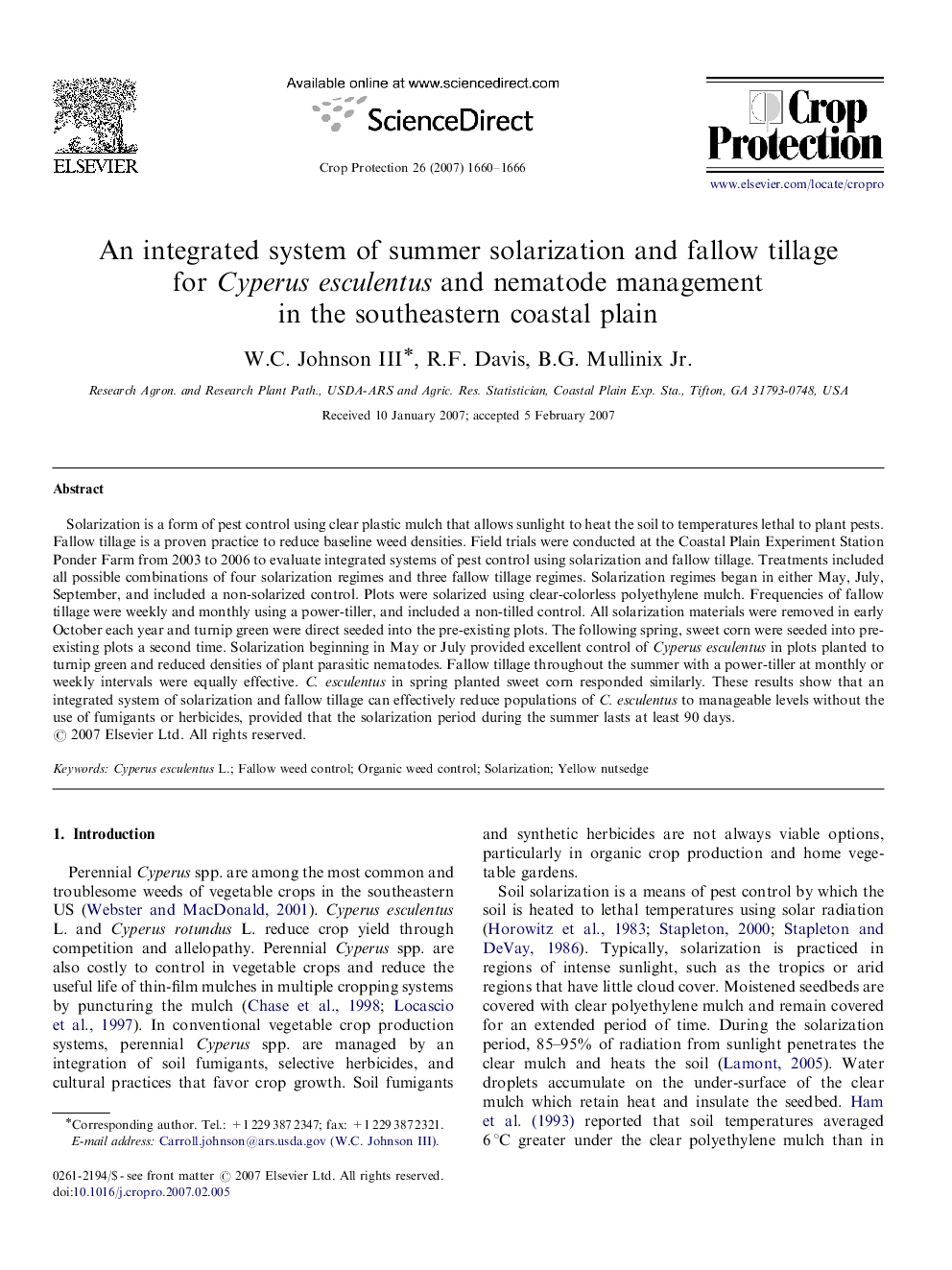| کد مقاله | کد نشریه | سال انتشار | مقاله انگلیسی | نسخه تمام متن |
|---|---|---|---|---|
| 4507032 | 1321337 | 2007 | 7 صفحه PDF | دانلود رایگان |

Solarization is a form of pest control using clear plastic mulch that allows sunlight to heat the soil to temperatures lethal to plant pests. Fallow tillage is a proven practice to reduce baseline weed densities. Field trials were conducted at the Coastal Plain Experiment Station Ponder Farm from 2003 to 2006 to evaluate integrated systems of pest control using solarization and fallow tillage. Treatments included all possible combinations of four solarization regimes and three fallow tillage regimes. Solarization regimes began in either May, July, September, and included a non-solarized control. Plots were solarized using clear-colorless polyethylene mulch. Frequencies of fallow tillage were weekly and monthly using a power-tiller, and included a non-tilled control. All solarization materials were removed in early October each year and turnip green were direct seeded into the pre-existing plots. The following spring, sweet corn were seeded into pre-existing plots a second time. Solarization beginning in May or July provided excellent control of Cyperus esculentus in plots planted to turnip green and reduced densities of plant parasitic nematodes. Fallow tillage throughout the summer with a power-tiller at monthly or weekly intervals were equally effective. C. esculentus in spring planted sweet corn responded similarly. These results show that an integrated system of solarization and fallow tillage can effectively reduce populations of C. esculentus to manageable levels without the use of fumigants or herbicides, provided that the solarization period during the summer lasts at least 90 days.
Journal: Crop Protection - Volume 26, Issue 11, November 2007, Pages 1660–1666